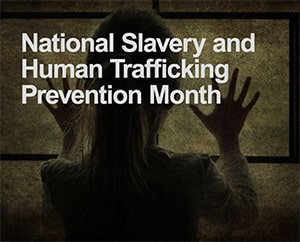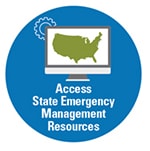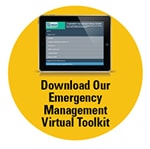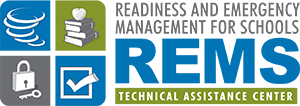|
Protecting Students From Child Exploitation in Virtual and In-Person Learning Environments
 The coronavirus disease 2019 (COVID-19) pandemic presented many unique challenges for education agencies. They included a need to prioritize outreach and awareness around child exploitation, which includes human trafficking, sextortion, and adult sexual misconduct in the school setting. In March 2020, the Federal Bureau of Investigation (FBI) released a notice highlighting the potential of an increased risk for child exploitation as schools continued to close in response to the pandemic. As highlighted in that announcement, virtual and hybrid learning models may increase student risk of and exposure to child exploitation, as well as decrease students’ access to trusted adults. Furthermore, mandated reporters like school personnel may face challenges in identifying signs of child exploitation and in managing reporting requirements and processes in adjusted teaching and learning environments. School safety and child exploitation must address virtual and in-person settings.
The coronavirus disease 2019 (COVID-19) pandemic presented many unique challenges for education agencies. They included a need to prioritize outreach and awareness around child exploitation, which includes human trafficking, sextortion, and adult sexual misconduct in the school setting. In March 2020, the Federal Bureau of Investigation (FBI) released a notice highlighting the potential of an increased risk for child exploitation as schools continued to close in response to the pandemic. As highlighted in that announcement, virtual and hybrid learning models may increase student risk of and exposure to child exploitation, as well as decrease students’ access to trusted adults. Furthermore, mandated reporters like school personnel may face challenges in identifying signs of child exploitation and in managing reporting requirements and processes in adjusted teaching and learning environments. School safety and child exploitation must address virtual and in-person settings.
As the U.S. Department of Education’s (ED) Office of Elementary and Secondary Education (OESE), Office of Safe and Supportive Schools (OSSS) and its REMS TA Center celebrate National Slavery and Human Trafficking Prevention Month throughout January with our partners in the field, we encourage you to take time this month and throughout the year to enhance efforts to educate students, faculty, staff, and the whole school community on the impacts of child exploitation, as well as train them on steps they can take to support prevention, protection, mitigation, response, and recovery.
While it is hard to predict what challenges the pandemic will present in 2021, schools and school districts across the country may continue to pivot between full in-person, virtual, and hybrid learning models. What does this mean for education leaders responsible for protecting students?
Enrollment rates may continue to drop, which may result in the number of students who are unaccounted for rising. Shifts in enrollment rates, as well as varied attendance requirements, present an ideal opportunity for perpetrators of child exploitation to remove students from and/or limit student access to learning environments. Perpetrators have experience tracking school attendance requirements to ensure that student attendance patterns do not cause red flags or trigger home visits, therefore, increasing their opportunities to exploit children.
- Work with student engagement, human resources, nurses, school counselors, School Resource Officers, and other community partners to create a plan that helps ensure continued engagement with students, families, and caregivers throughout the school year via virtual and in-person home visits and one-on-one sessions with parents and caregivers. Community partners’ role can be key as it relates to attendance and more, including investigations of reports of suspicious behavior by adults or possible victimization of students.
- Create a plan to check in regularly with educators, counselors, school bus drivers, coaches, and other faculty and staff who regularly interact with kids to determine whether they can provide support with identifying information shared, odd behavior, or any elements that may suggest a child may be in danger or an adult may be grooming, testing, or actively exploiting a student.
Students may continue to spend more time learning in a virtual environment. This is increasing the level of vulnerability and risk surrounding human trafficking, sextortion, and other child exploitation crimes that often take place in the virtual setting. Educators and school personnel often serve as the front line for identifying exploited or at-risk youth as they have a unique view and opportunity to influence and monitor the development of students.
- Provide educators with tip sheets that they can use to identify signs, and clarify local reporting requirements around child exploitation via professional development sessions.
- Work with your Information Technology department to help ensure that virtual learning systems remain safe and secure for students, and that faculty and staff have been trained on cybersecurity procedures and techniques that can further protect students.
Now is a more momentous time than ever to educate the whole school community on not only spotting the signs of child exploitation but also to update emergency operations plans (EOPs) and related annexes to help ensure that schools can continue to provide safe and supportive learning environments while protecting students.
ED’s OSSS, OESE, and REMS TA Center have made it a priority to create collaborative resources to help education agencies combat and create plans around managing and promoting awareness specific to child exploitation. We encourage you to take advantage of the following resources that have been created in response to this important topic to support leaders, partners, and planning teams.
Human Trafficking:
Sextortion:
An abundance of additional resources can be found from the National Center for Missing and Exploited Children, an organization that is solely dedicated to combatting and mitigating human trafficking and commercial sexual exploitation.
Adult Sexual Misconduct:
Cybersecurity:
- Cybersecurity and Cyber Safety TA Snapshot. In this TA Snapshot, we provide information on cybersecurity for schools and outline steps education agencies can take, with the collaboration of parents, to protect student privacy while increasing the use of digital learning and video sharing platforms in response to the COVID-19 pandemic.
- Coronavirus Disease 2019 (COVID-19): Key Preparedness and Response Considerations. This is a tip sheet full of cyber safety quick links for protecting youth and empowering students to become responsible digital citizens who engage in online safely.
Follow @remstacenter on Twitter to stay informed about human trafficking awareness activities throughout the month! Also follow these hashtags to access information from Federal partners:
- #EndTrafficking
- #HumanTrafficking
- #ForcedLabor
- #LaborTrafficking
- #SexTrafficking
|











 The coronavirus disease 2019 (COVID-19) pandemic presented many unique challenges for education agencies. They included a need to prioritize outreach and awareness around child exploitation, which includes human trafficking, sextortion, and adult sexual misconduct in the school setting. In March 2020, the
The coronavirus disease 2019 (COVID-19) pandemic presented many unique challenges for education agencies. They included a need to prioritize outreach and awareness around child exploitation, which includes human trafficking, sextortion, and adult sexual misconduct in the school setting. In March 2020, the